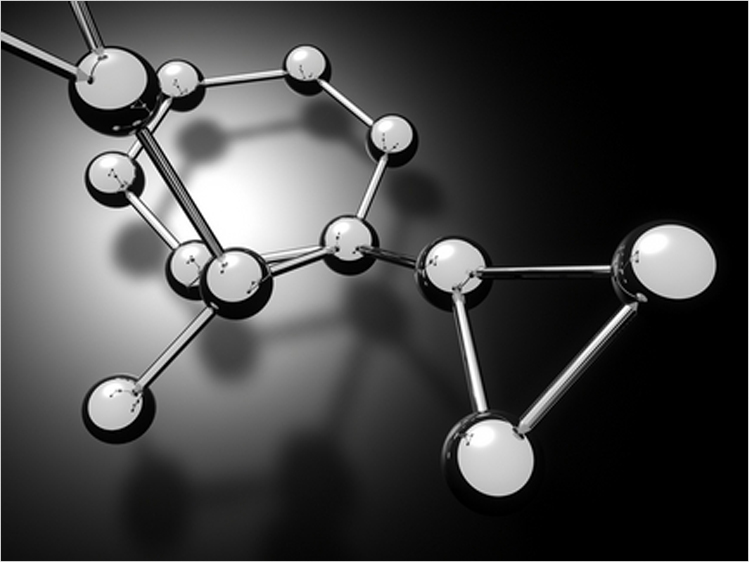
Modeling and manipulation of matter can change the world
Modeling and manipulation of matter can change the world
What is nanotechnology, the “new scientific revolution”?
The term nanotechnology has received much attention from the media in recent years. It reached the point where nanotechnology is considered to be the new scientific revolution, which promises faster computers, remedies for cancer and even solutions to the energy crisis, just to name a few.
The formal definition of nanotechnology, as given by the National Nanotechnology Initiative (INN), is the “understanding and control of matter at dimensions between approximately 1 and 100 nanometers, where unique phenomena enable novel applications”. Encompassing nanoscale science, engineering, technology, nanotechnology involves imaging, measuring, modeling, and manipulating matter on a very small scale.
In the definition of INN, we distinguish three basic concepts. The first is that nanotechnology is very, very small. When something is at a nanoscale, it measures somewhere between 1 and 100 nanometers. When something has such a small size, it cannot be seen with the naked eye or even with a common microscope. Scientists had to develop some special tools to view the matter at a nanometer scale.
Some matters have always been at a nano-scale (for example, water molecules and silicon atoms). However, in recent years, scientists have been able to use tools and processes to synthesize and manipulate common matters, such as titanium dioxide particles, at a nanoscale.
The second concept is that, at the nanoscale, materials can behave in different and unexpected ways. So, many common materials have unusual properties, such as a remarkably low resistance to electricity, lower melting points or faster chemical reactions.
For example, on a macroscopic scale, gold is shiny and yellow. However, when the gold particles have 25 nm, gold appears as having a red color. The smaller particles interact differently with light, so the gold particles appear in a different color. Depending on the size and shape of the particles, gold can appear to be red, yellow or blue.
Another example of nanoparticles which appear to be different to the macroscale material are the sunscreens. Titanium dioxide is used in sunscreens for such a long time. It’s one of the ingredients that make creams have a white color. Manufacturers are currently using nanoparticles to create colorless creams and gels (titanium dioxide nanoparticles are transparent).
Other properties can change when materials are on the nanoscale. For example, aluminum is a shiny pliable metal, used to make soda cans. At the nanoscale, aluminum particles are extremely reactive and will explode. Nanoparticles are more reactive, as they have a larger area than macroscopic particles.
Third, researchers want to exploit these different and unexpected behaviors to achieve new technologies. By harnessing these new behaviors, researchers in many different disciplines hope to create many new things ranging from everyday products such as antimicrobial socks and lighter tennis rackets, faster and smaller computers or selective treatment that attacks a specific disease. Many scientists and researchers think that possibilities are endless.
Also, a lot of interesting substances can be made by manipulating molecules to achieve certain forms that can create materials with incredible properties. An example is a carbon nanotube. To create it, is started with a sheet of graphite molecules that is rolled into a tube.
The orientation of the molecules determines the nanotube’s properties, and could reach a conductor or semiconductor. Well rolled, carbon nanotube will be hundreds of times stronger than steel and weighing 6 times less.
There are some products using nanotechnology, and one of the most common instances is the use silver nanoparticles in consumer products. Silver is inherently antimicrobial and was used to control bacteria since ancient times.
By incorporating nanoscale silver into textiles, plastics and household appliances, manufacturers can make materials that use a small amount of silver to kill bacteria without affecting other properties of the products.
However, there is concern that increased use of silver in this manner may represent an environmental risk or lead to the development of silver-antibiotic-resistant bacteria.
Clothing / garments can be improved. For example, by coating the fabrics with a thin layer of zinc oxide nanoparticles, clothes can have better protection against UV rays. Others have nanoparticles that help repel water and other materials, making them stain resistant.
With such a wide range of applications, nanotechnology has the ability to change the world; but in order to achieve this, scientists and engineers need to better understand the behaviour of nanoscale materials and to discover how to synthesize them reliably.
https://www.youtube.com/watch?v=WOqEk440JZ8

Leave a Comment